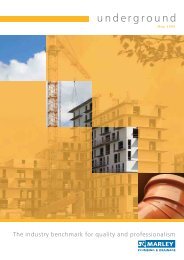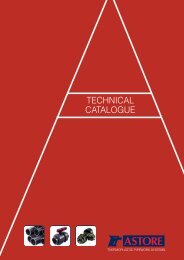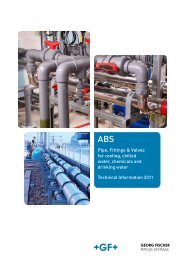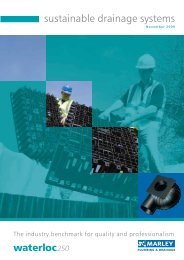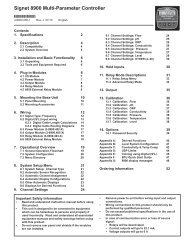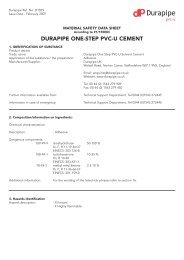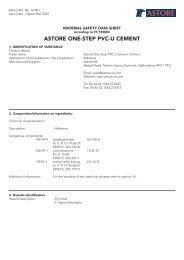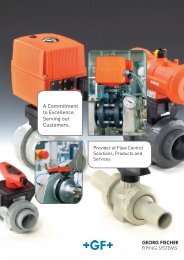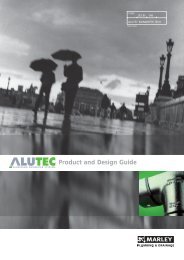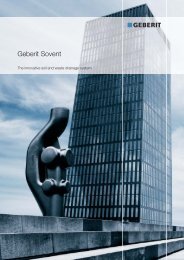SYGEF Product Catalogue
SYGEF Product Catalogue - Building Products Index
SYGEF Product Catalogue - Building Products Index
- No tags were found...
You also want an ePaper? Increase the reach of your titles
YUMPU automatically turns print PDFs into web optimized ePapers that Google loves.
General conditions<br />
Protect the area of the fusion joint from adverse weather<br />
conditions, such as rain, snow and wind. At<br />
temperatures below +5 °C or above +45 °C, measures<br />
must be taken to ensure that the temperature in the<br />
working area is in the range required for satisfactory<br />
jointing and does not hinder the necessary manual tasks.<br />
Protect the fusion area<br />
Screening the fusion area can ensure a more even<br />
temperature distribution on the entire circumference of a<br />
pipe subject to direct sunlight. The pipe ends at the<br />
opposite end of the fusion areas should be sealed<br />
whenever possible to reduce to a minimum the cooling<br />
of the fusion surfaces which can be caused by wind.<br />
Preparation of the fusion joint<br />
The quality of the fusion process is governed by the care<br />
with which the preparatory work is carried out. This part<br />
of the procedure therefore deserves special attention.<br />
Heating tool<br />
Set the temperature of the heating element to 240 °C.<br />
Check the temperature. The fusion temperature should<br />
be between 232 °C and 248 °C.<br />
Check the temperature<br />
Temperature of heating element 232 °C to 248 °C<br />
To test the thermostat, check temperature before<br />
commencing the fusion jointing. This is best carried out<br />
with the help of a digital thermometer. But only<br />
thermometers with a sensor for measuring surface<br />
temperature are suitable.<br />
To ensure it is being maintained at the correct level the<br />
fusion temperature should be checked from time to time<br />
during the jointing work. The temperature of the heating<br />
element is particularly sensitive to wind.<br />
Clean the heating element<br />
Clean the heating element with dry, clean paper before<br />
each fusion joint!<br />
Protect the working surface of the heating element from<br />
becoming soiled. Clean both faces of the heating<br />
element with dry, lint-free paper before each fusion joint.<br />
Protect the heating element from wind, damage and<br />
soiling during the intervals between making fusion joints.<br />
Planing and subsequent checking<br />
Before machining the fusion surfaces, make sure that<br />
the tools and the work pieces are clean and grease-free<br />
even beyond the fusion zone; if necessary, clean with a<br />
cleaning fluid.<br />
All the components clamped into the fusion jointing<br />
machine are planed simultaneously with the planer<br />
provided. The shavings should not be thicker than d 0.2<br />
mm. This step is completed when there is no<br />
unmachined area left on either of the parts to be joined.<br />
This is normally the case when no more shavings come<br />
21



